- Anthony D'Amico
- Albums and Singles
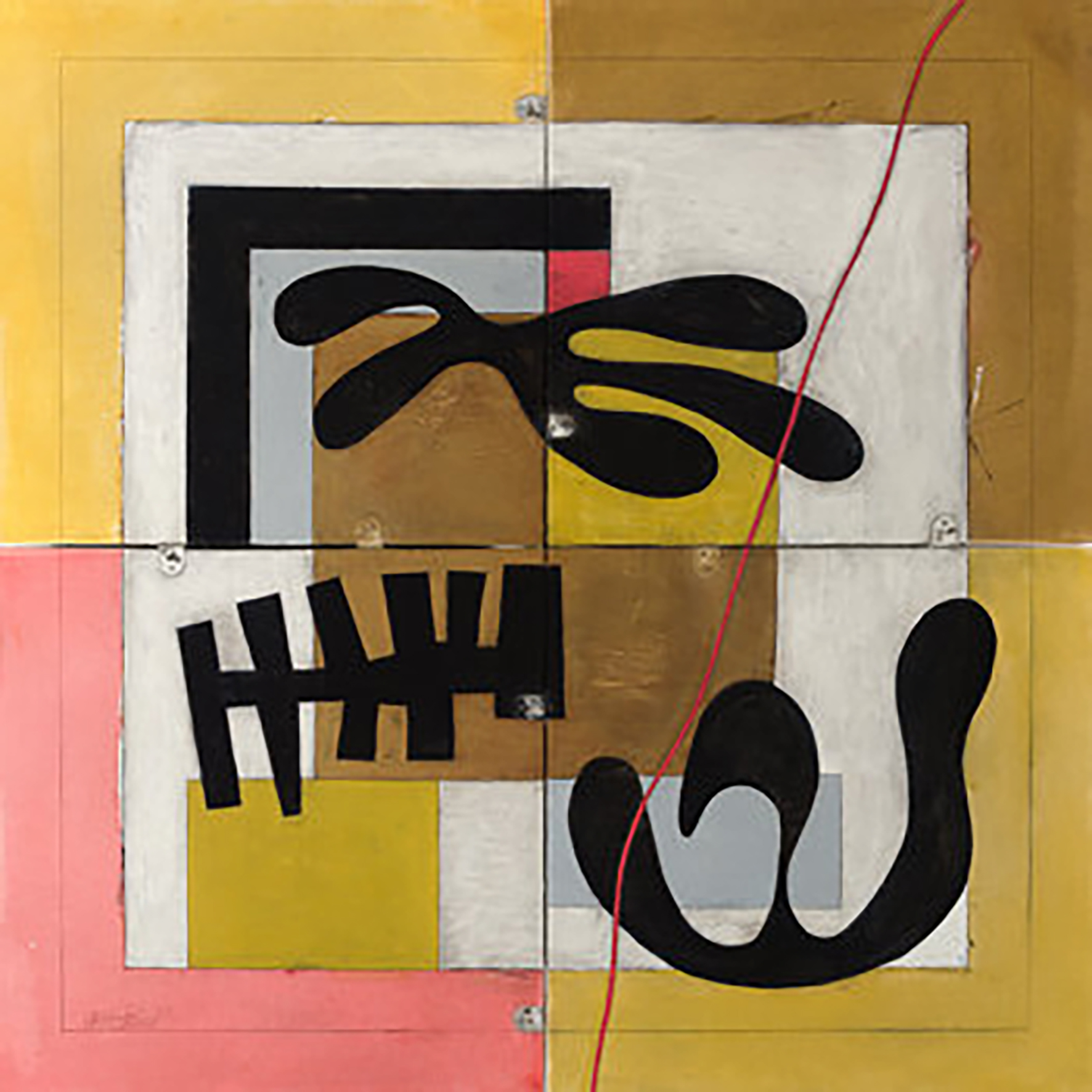 I am not sure which is more impressive: that Ashley Paul managed to compose a focused, inventive, and challenging album like this while living with a toddler or that she somehow managed to (remotely) form a tight new trio of like-minded collaborators during a pandemic lockdown. Admittedly, I was a bit apprehensive about the latter development, as the fragility and uneasy intimacy of Paul's past work has always been one of its more endearing aspects, but her instincts thankfully proved to be characteristically unerring, as Ray continues her recent streak of great albums. In fact, this is probably an ideal entry point to Paul's singular aesthetic, as it beautifully balances her more "broken" and discordant tendencies with an increased warmth, as well as a side that approximates a hallucinatory cabaret as envisioned by the Quay Brothers. It all works wonderfully, as this more varied approach yields some instant career highlights while sacrificing none of the precarious magic that made her work so unique and mesmerizing in the first place.
I am not sure which is more impressive: that Ashley Paul managed to compose a focused, inventive, and challenging album like this while living with a toddler or that she somehow managed to (remotely) form a tight new trio of like-minded collaborators during a pandemic lockdown. Admittedly, I was a bit apprehensive about the latter development, as the fragility and uneasy intimacy of Paul's past work has always been one of its more endearing aspects, but her instincts thankfully proved to be characteristically unerring, as Ray continues her recent streak of great albums. In fact, this is probably an ideal entry point to Paul's singular aesthetic, as it beautifully balances her more "broken" and discordant tendencies with an increased warmth, as well as a side that approximates a hallucinatory cabaret as envisioned by the Quay Brothers. It all works wonderfully, as this more varied approach yields some instant career highlights while sacrificing none of the precarious magic that made her work so unique and mesmerizing in the first place.
Any doubts I had about a trio potentially diluting the eerie beauty of Paul's art were immediately erased by the opening "Star Over Sand," which makes me feel like I just stumbled into a jazz club in a nightmarish inversion of the Muppet universe. It is quite a impressive feat, as the piece somehow manages to be fun, catchy, and propulsive while also sounding artfully strangled, clattering, and ramshackle. Later, "Light Inside My Skin" hits similar heights, as the intertwining sax and clarinet melodies, plinking and lurching groove, and Paul's vocals combine to approximate a sultry jazz chanteuse performance that would be right at home in Twin Peaks. Notably, I was taken aback when I realized that Paul's new bandmates were actually a clarinetist (Yoni Silver) and a bassist (Otto Willberg), as I was absolutely certain that she had recruited a killer drummer instead. As it turns out, Paul herself was the killer drummer, which bodes very well for future albums, as the unusual percussion is probably my favorite of Ray's new innovations. That said, Paul is still quite a compelling presence with even the most minimal backing, as evidenced by the languorous, tender beauty of "Choices." I also like the similarly intimate and slow-moving "Blue Skies Green Trees" quite a lot, yet Paul's vision alone would be spellbinding enough without any stand-out songs, as she occupies a truly fascinating nexus where emotional directness, fragility, strong songwriting, childlike creepiness, stellar musicianship, and radical harmonic and melodic sensibilities not only intertwine, but somehow feel perfectly natural and unforced together. No one but Ashley Paul could have envisioned and successfully executed an album like this one, but Willberg and Silver certainly ground and flesh out her aesthetic quite nicely. This trio format turned out to be quite a fine idea.
Samples can be found here.
Read More
- Anthony D'Amico
- Albums and Singles
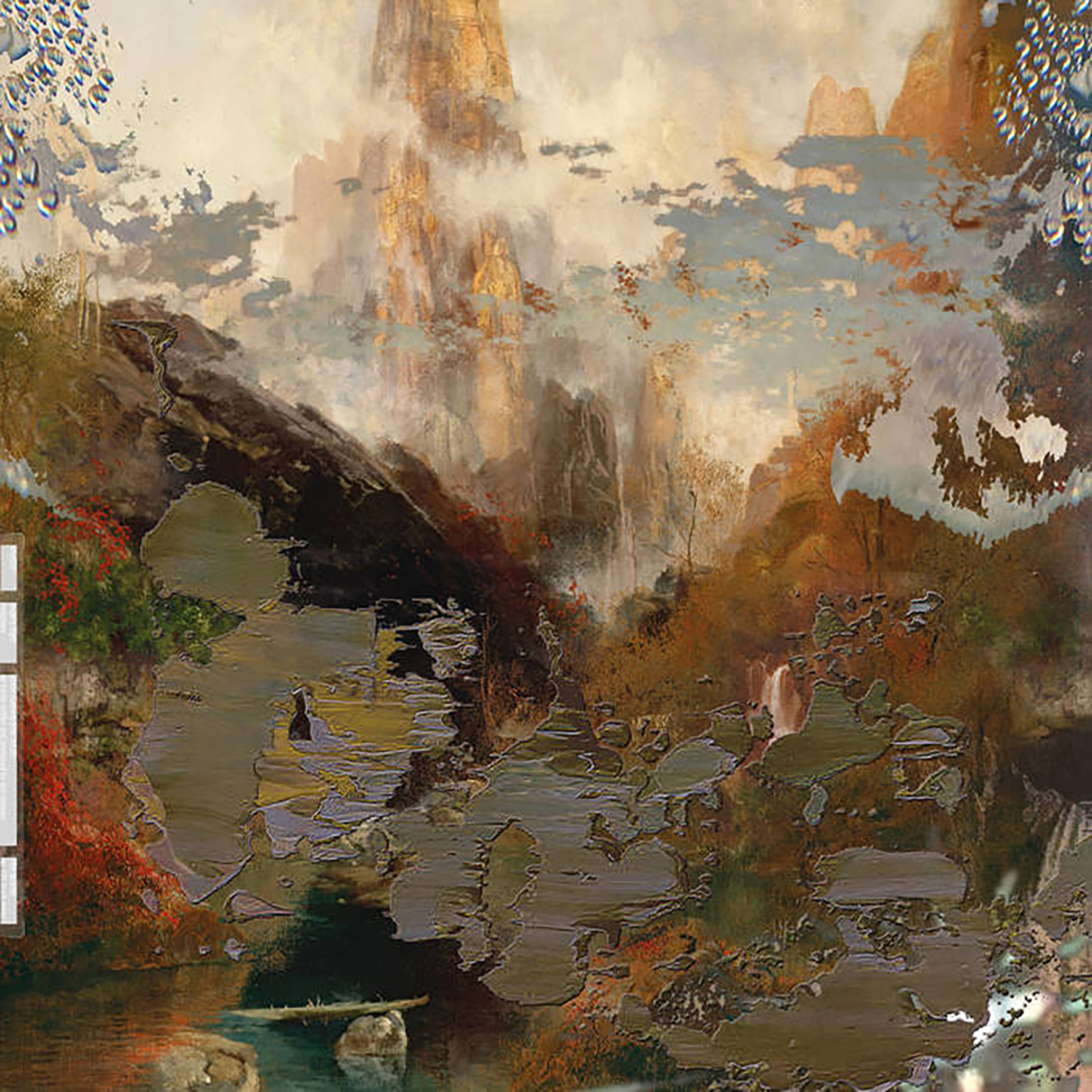 I believe I have been listening to Biosphere for at least 20 years now, but the project's evolution over the last five years or so has been especially fascinating, as Geir Jenssen's creative restlessness has led him to release one surprise after another. To my ears, 2016's Departed Glories remains the high water mark of this adventurous phase, but I am delighted that Jenssen seems to be actively looking for new challenges and that the results are almost invariably enjoyable and distinctive. This latest release continues that trajectory of endlessly breaking new ground, as the bulk of Angel's Flight was composed for a Norwegian dance production entitled Uncoordinated Dog. More significantly, all twelve pieces were crafted from repurposed fragments of Beethoven's "String Quartet No. 14." Unsurprisingly, much of the album would be unrecognizable to Beethoven, as Jenssen does an admirable job of blurring, stretching, blackening, and chopping his source material into a compellingly hallucinatory neo-classical fever dream.
I believe I have been listening to Biosphere for at least 20 years now, but the project's evolution over the last five years or so has been especially fascinating, as Geir Jenssen's creative restlessness has led him to release one surprise after another. To my ears, 2016's Departed Glories remains the high water mark of this adventurous phase, but I am delighted that Jenssen seems to be actively looking for new challenges and that the results are almost invariably enjoyable and distinctive. This latest release continues that trajectory of endlessly breaking new ground, as the bulk of Angel's Flight was composed for a Norwegian dance production entitled Uncoordinated Dog. More significantly, all twelve pieces were crafted from repurposed fragments of Beethoven's "String Quartet No. 14." Unsurprisingly, much of the album would be unrecognizable to Beethoven, as Jenssen does an admirable job of blurring, stretching, blackening, and chopping his source material into a compellingly hallucinatory neo-classical fever dream.
The album instantly descends into darkly phantasmagoric territory with "The Sudden Rush," which conjures a sinister-sounding impressionist swirl of blurred and uneasily harmonizing orchestral fragments. To some degree, that is the tone for the entire album: a series of variations upon the theme of smeared and slowed strings bleeding together and queasily undulating. Both the mood and structure of the individual pieces can vary quite a bit, however. Most of my favorite moments fall in the middle of the album, like the oscillating, slow-motion chord progression of "As Weird as the Elfin Lights" or the dreamlike flutes and viscerally throbbing pulse of the title piece. That said, the album probably reaches its zenith with the stuttering and gnarled closer "The Clock and Dial," which calls to mind several orchestral loops being played at once through a blown-out bass amp. Jenssen treats the hapless Beethoven similarly violently in the heaving "Unclouded Splendor," which achieves an almost operatic intensity from erratically timed and overlapping slashes of strings. There are a number of other fine pieces throughout the album as well, many which call to mind a reincarnated Debussy with a penchant for loops, a newfound love of dissonance and tension, and access to contemporary production software. Or maybe they simply resemble Beethoven as re-envisioned by The Caretaker, albeit considerably more vivid and robust than that sounds. Angel's Flight is not a stroll through the ruins of a haunted and moldering memory ballroom so much as a lush, enveloping, and oft-poignant symphony in which the fabric of reality frays and bulges as time ceases to be predictably linear. Needless to say, that is quite an appealingly disorienting and immersive illusion to linger in. I certainly did not expect Biosphere to ever sound like this, but I am delighted that Jenssen's muse led him to such wonderfully unfamiliar territory.
Samples can be found here.
Read More
- Anthony D'Amico
- Albums and Singles
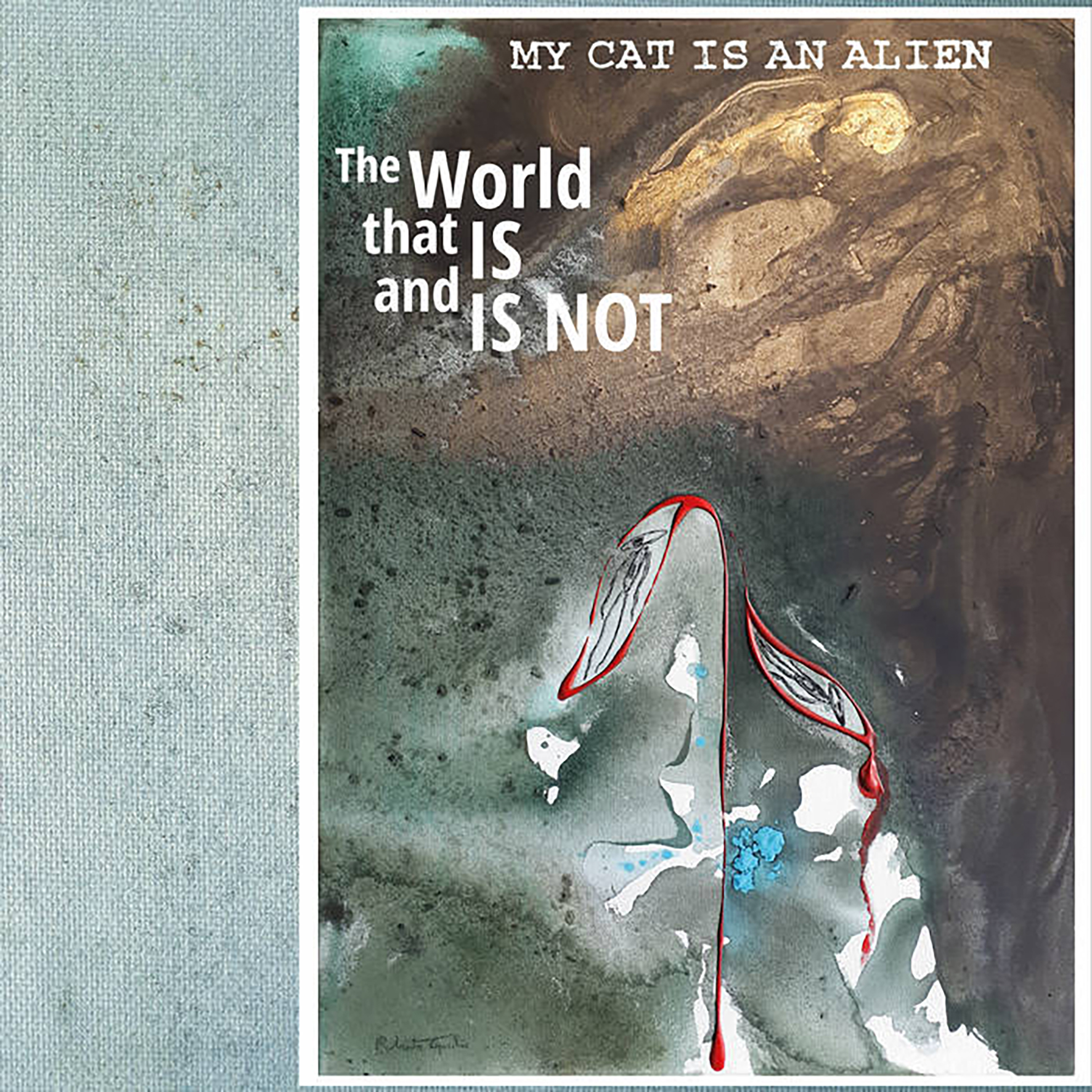 The Opalio Brothers somehow managed to release three strong albums last year, but I believe only this one was (spontaneously) composed and recorded during the pandemic. It was also inspired by it, as The World That IS and IS NOT is billed as a concept album of sorts: an "existential reflection" on a scenario "where everything seems to vanish into the void." That admittedly sounds like a recipe for a bleak album, but the Opalios arguably went the opposite route, heading in a warmer direction to illustrate how music and art can help us transcend the "spiritual disquiet and moral despair" of the current age. To new or casual fans, that increased warmth will probably be nearly imperceptible, as it will be largely eclipsed by the fundamentally outré and mind-meltingly psychedelic elements of this project. Longtime fans will definitely notice a difference though, as this is an unusually meditative album with a satisfying and purposeful arc. While I tend to enjoy the comparative unpredictability of MCIAA's collaborations the most these days, this one captures Roberto and Maurizio in especially inspired form on their own, as I would be hard-pressed to think of a more perfectly distilled example of their warped and wonderful vision.
The Opalio Brothers somehow managed to release three strong albums last year, but I believe only this one was (spontaneously) composed and recorded during the pandemic. It was also inspired by it, as The World That IS and IS NOT is billed as a concept album of sorts: an "existential reflection" on a scenario "where everything seems to vanish into the void." That admittedly sounds like a recipe for a bleak album, but the Opalios arguably went the opposite route, heading in a warmer direction to illustrate how music and art can help us transcend the "spiritual disquiet and moral despair" of the current age. To new or casual fans, that increased warmth will probably be nearly imperceptible, as it will be largely eclipsed by the fundamentally outré and mind-meltingly psychedelic elements of this project. Longtime fans will definitely notice a difference though, as this is an unusually meditative album with a satisfying and purposeful arc. While I tend to enjoy the comparative unpredictability of MCIAA's collaborations the most these days, this one captures Roberto and Maurizio in especially inspired form on their own, as I would be hard-pressed to think of a more perfectly distilled example of their warped and wonderful vision.
This three-song suite deceptively opens with an extended piece that explores somewhat familiar alien terrain, as rattling, discordant, and broken arpeggios from Maurizio's self-made double-bodied string instrument erratically tumble through the dreamlike haze of Roberto's wordless vocalizations. The execution is unusually wonderful, however, as the increasingly sliding, scraping, and bleary strings create a deepening sense of immersive otherworldliness. That sets the stage nicely for the album’s centerpiece, "Whispers of Hope and Illusions," which calls to mind a ramshackle, post-apocalyptic structure of rusted metal wires being violently shaken by a passing storm of extradimensional psychedelia. It is probably one of my favorite MCIAA pieces to date, casting an immersive spell of rattling, undulating, and semi-curdled heaven. Granted, it is still a surreal mindfuck beyond earthbound tonality, but it is complex, nuanced, and weirdly beautiful enough not to feel like a lysergic nightmare (though the storm does get kind of intense). The album closes with yet another unusual (if brief) piece entitled "Prayer For A New Aurora," which feels like a window into a ritual or religious ceremony from an alien planet or alternate dimension. I especially liked whatever sounds like a homemade synthesizer dissonantly attempting to replicate a vuvuzela being strangled. Together, the three pieces flow into quite an absorbing and memorable whole and not a single theme ever overstays its welcome. While I sometimes pine for the days of incredibly long MCIAA albums, I am similarly enamored with beautifully focused and concise statements like this one. If there is another album by the Opalios that strikes a better balance between bold outsider vision and repeat listenability, I certainly cannot think of it.
Samples can be found here.
Read More
- Eve McGivern
- Albums and Singles
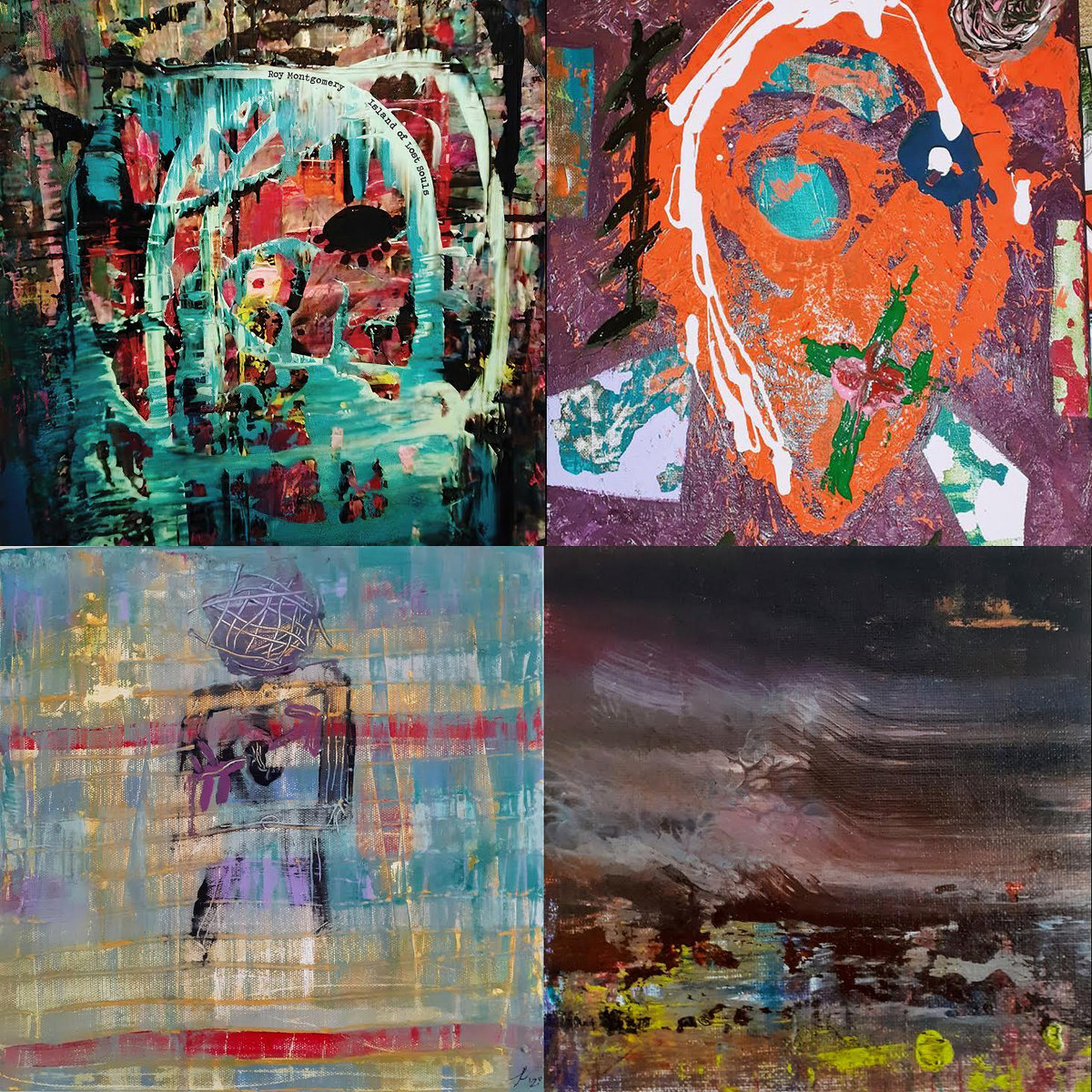
The magic of New Zealand-born singer and guitarist Roy Montgomery is his fearlessness to explore any sonic territory. He has done so across 40 years of collaborative and solo musical landscape. Island of Lost Souls is the first album of a 4-disc series to honor his extensive career, the future releases due to be issued in increments through to November 2021. With compositions steeped in rich guitar effects, the four extended instrumentals suggest communion and isolation, channeled through four island residents’ musical memorials: Sam Shepard, Adrian Borland, Peter Principle, and Florian Fricke. The ambiance across songs wavers between being majestically sad yet with a power mimicking hope, encouraging remembrance and honor without pain.
I was generally familiar with each person honored, but the musical translations made me curious why Montgomery chose these particular four. If there were indeed such an island, what would make each one a resident? Opening track “Cowboy Mouth (For Sam Shepard)” took me to research Shepard, whose honor seems to stem from both his playboy lifestyle and the elements of his plays, “Cowboy Mouth” being a collaboration with his then-lover Patti Smith, abandoning both lover and play after the opening night. “Soundcheck (For Adrian Borland)” is a shimmering tribute to the late lead singer of The Sound, who jumped in front of a train at the age of 41 following years of struggle with severe depression. The ache of “Soundcheck” soars in waves, incorporating sound elements The Sound used in their music, expressing the tragic loss more deeply yet producing a majestic atmosphere that was also Borland’s life. “Unhalfmuted (For Peter Principle)” focuses on the late musician and rhythmic pulse of Tuxedomoon, the song’s title a reference to the band’s classic debut “Half-Mute.” The album leaves the island with “The Electric Children of Hildegard von Bingen (For Florian Fricke),” a track that honors Fricke not only as Popol Vuh’s synthesist but showcasing the spiritual reverence in his work, especially within the band as well as soundtracking the films of his close friend Werner Herzog. The album continues to offer up further tidbits to research, both in sound and titles -- Wikipedia took me down a rabbit hole -- but I'll leave that to the curious listener. Kudos to someone who not only continues to entertain my ears after 40 years, but to grow my mind as well.
Samples can be found here.
Read More
- Administrator
- Albums and Singles

Alkisah tells a story of a society that disbanded itself from a collapsing civilization and regroups to build a new one for the future. However, that future may not be there because the impending doom is upon them. What comes after is all that matters.
This album is co-released by multiple independent record labels across the globe. The labels are given full freedom to design their own versions of the cover art and packaging, and curate their own remixes/reinterpretations of the album as part of the release.
Dekorder will release a vinyl edition of 100 copies. A special reinterpretation of the album will be announced soon.
This decentralized method of music distribution allows the album to be more accessible, while at the same time redefining music exclusivity by sharing its ownership, and empower smaller scattered powers to grow and connect.
Jogjakarta's Senyawa embodies the aural elements of traditional Indonesian music whilst exploring the framework of experimental music practice, pushing the boundaries of both traditions. Their music strikes a perfect balance between their avant-garde influences and cultural heritage to create truly contemporary Indonesian new music. Their sound is comprised of Rully Shabara's deft extended vocal techniques punctuating the frenetic sounds of instrument builder, Wukir Suryadi's modern-primitive instrumentation. Inventions like his handcrafted 'Bamboo Spear'; a thick stem of bamboo strung up with percussive strips of the animal skin along side steel strings. Amplified it fuses elements of traditional Indonesian instrumentation with garage guitar distortion. Sonically dynamic, the instrument can be rhythmically percussive on one side whilst being melodically bowed and plucked on the other.
They have collaborated and performed with many notable musicians such as Stephen O'Malley (Sunn o))) ), Yoshida Tatsuya, Otomo Yoshide, Lucas Abela, KK Null, Keiji Haino, Rabih Beiani, Trevor Dunn, Greg Fox, Sophia Jernberg, Arrington De Dionysus, Melt Banana, Jon Sass, Damo Suzuki, Jerome Cooper, Oren Ambarchi, David Shea and Kazu Ushihashi.
"Indonesian duo Senyawa is one of the most intense live bands in the world" - Red Bull Music Academy
"Senyawa can be counted among the most thrilling, edgy and original live performance units anywhere in the world." - The Wire
"Senyawa forged a sound that brings with it another dimension of weight, one that can't be measured." - The Quietus
"Senyawa's music rises from the belly of the beast and crawls out of its gaping maw" - Pitchfork
"Generally speaking, Senyawa operate on a force-of-nature level" - Resident Advisor
More information can be found here.
Read More
- Administrator
- Albums and Singles

Watching Abul Mogard’s Live performance in Atonal Festival 2017 and his releases on Not Waving’s Ecstatic record label were somewhat of a milestone in Malka Tuti's sonic aesthetics. His ability to touch us with those pulsating sonic textures coming out of his modular machine inspired us in MTHQ for years to come.
We were more then happy that Mogard chose to contact Tapan about their album and eventually deciding to remix not one but two tracks from the Belgrade duo…it was like a circle coming to a close.
On the A-side, Mogard take the original 17-minute sax-infused piece that is "Europa" and drenches it with drones and low frequency pulses and atmosphere, creating a some sort of a post-apocalyptic intense atmospheric soundtrack. The effect of drowning the horns from the original track in a sea of drones and pads, contributes to the over all impression of listening to a distant memory of music… fitting for days like these....
On the B-side, Mogard takes it to the next level, capturing a line from Tapan's original collaboration with Jerusalem In My Heart's Radwan Ghazi Moumneh, and passes it through his modular system, amalgamating an epic piece of tense build-ups and repetitive movements...
The original artwork was made by artist Marja de Sanctis and adapted, as always, to the sleeve by Morey Talmor.
More information can be found here.
Read More
- Administrator
- Albums and Singles

"This new album is the second chapter of this present Mainliner. finally we could open to the next stage to break old customs since 1995"
The follow up to 2013's Revelation Space has been rumored for many years. I've even heard tales of several recordings being finished and scrapped over the last five years. That's how hard it is to run a band when members are based on different continents and in other very busy bands themselves.
But it's finally done. And it's being pressed as I type.
The killer trio from the original reformation is all intact, we have Kawabata Makoto (motorpsycho guitar), Koji Shimura (drums) and Kawabe Taigen (bass/vocals) and we're back to calling them just Mainliner once again.
Q. What does Dual Myths sound like ?
A. Mainliner, it's nasty!
More information can be found here.
Read More
- Administrator
- Albums and Singles

Neutral's seminal LP, Grå Våg Gamlestaden, is widely considered ground zero for the explosion of creativity that has transpired in the Swedish Underground ever since. It is the noisy experimental rock album that opened the door and welcomed in so many artists working behind the scenes. Gothenburgers Dan Johansson (Sewer Election) and Sofie Herner had previously made music together in the band Källarbarnen when they started discussing a new methodology and a fresh sound for recordings in 2013 under a new name as a duo.
After witnessing Sofie and Dan's live performance in an artist’s studio in the spring 2014, Gustaf Dicksson, who was running the Omlott record label at the time as well as performing under his own moniker, Blod, offered to release an album by Neutral on the spot.
Sofie recorded most of the instruments and voice, Dan worked on manipulating the recordings, experimenting with reel-to-reel techniques. The title of the LP translates as "Grey Wave Gamlestaden" and was chosen as an inside joke about the neighborhood Gamlestaden where Dan and Sofie lived. A major theme on the recording is a certain kind of bleakness but with a wry smile closely identified with the spirit of the neighborhood.
In the fall of 2014, Grå Våg Gamlestaden was released, limited to 200 copies, and sold out quickly without many copies making it outside of Sweden. Around the same time, Dan & Sofie joined forces with other underground artists in their widening circle to form a sort of Gothenburg supergroup making music together as Enhet för Fri Musik.
Grapefruit's reissue of Grå Våg Gamlestaden is the first time Neutral's masterpiece has seen the light of day since it sold out quickly in 2014. Our vinyl-only gatefold reissue is limited to 300 copies.
More information can be found here.
Read More
- Administrator
- Albums and Singles

"Fantas" is the epic opening track on Caterina Barbieri’s acclaimed 2019 release Ecstatic Computation. The original "Fantas" laid out a magical path of patterns leading the listener on a journey into the sound itself. Fantas Variations maps out eight new potentials sprung from this initial path as constructed by a diverse mix of artists lending to a wide spectrum of new works extrapolated from the original work. For this project Barbieri invited friends and long time collaborators from a variety of musical backgrounds to create a more sustainable and inclusive landscape in terms of stylistic, geographical, gender and generational balance. The results are a diverse array of approaches and instrumentation which blur the boundaries between the acoustic and electronic.
Fantas Variations embraces a platform for mutual exchange and support between like-minded artists, where active and collective re-imagination is prioritized over the traditional model of remixes, which is often strategic, functional and more passive.
Longtime friend and collaborator Kali Malone rearranged "Fantas" to a slowed-down, austere and eerie version for two organs. Evelyn Saylor created a piece for a vocal ensemble consisting of her, Lyra Pramuk, Stine Janvin and Annie Garlid, joining forces to express the choral, psychedelic and vitalistic nature of the piece. Barbieri's former guitar professor at the Conservatory in Bologna, Walter Zanetti, composes "Fantas" for electric guitar, by translating every single gesture of the original electronic piece into a personal, nuanced and detailed interpretation. Bendik Giske's reinterpretation for saxophone and voice captures the atmospheric essence of "Fantas" and its psychic meteorology. Longtime collaborator and along with Barbieri the other half of the outfit Punctum, Carlo Maria, resynthesizes "Fantas" for TR808 and MC202, bringing a more club-oriented dimension of the piece to life whilst unveiling the sonic continuum between rhythm and pitch through a sensitive timbral approach. Jay Mitta's Singeli reinterpretation of "Fantas" transpires with pitched-up percussion and turbo-fast poly-rhythmic patterns unleashing the frenetic, shifting, transformative matter within the piece to a higher plain of euphoric dance. Baseck's variation is a rave fantasia, where the prismatic trance of the original is channeled into fierce, uncompromising hardcore, whilst Kara-Lis Coverdale's take is a phantasmagoria for piano that gently, yet inexorably, captures the relentlessness chimerical qualities of the original, unveiling its spectral backbone.
More information can be found here.
Read More
- Administrator
- Albums and Singles
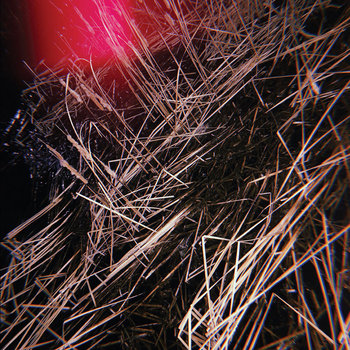
Originally initiated for the Merzbow, Kelly Moran, Prurient USA tour (representing three generations of heavy electronics), this archival recording is finally released as Chain Reaction At Dusk.
Moran and Prurient first met in 2018 and the two bonded over an unlikely composite of piano, drone and noise synthesis (Moran from John Cage, while early Prurient tapes cut-up Erik Satie).
A leader in the realm of prepared piano, Kelly Moran quickly drew attention for her massive and seamlessly complex juxtapositions of plucked icy melodic sequences and deep sub bass compositions, culminating in a stunning 2018 LP, Ultraviolet.
With 3-tracks of continuous intertwining melodic tension, Moran continues her juxtaposition of crystalline single note attacks upon a bed of massive low end prepared drones.
Shattering genre, Moran culls from a broad palate of classical, post-minimalism, ambient and other forms to free the piano from convention pushing high and low frequencies through electronic pairing and coupling. Recorded at her home in fall 2018, Moran’s split side showcases the composer’s prepared piano treated with delays and granular synthesis over a heavy wash of droning, arpeggiating synthesizers.
Similarly, Prurient returns with a side parallax-view vocal barrage complimentary to Moran’s fractal modes. Composed at Guy Brewer's (Shifted) former Berlin studio, Fernow accessed a cache of pristine analog synthesizers and sequencers while finishing the process with Kris Lapke in New York with layers of crude telephone dictation manipulation, resulting in surrealist vocal cut-ups - and "exquisite corpse" static.
Kelly Moran speaks of her music and as movement on the psychedelic path and the interior, while Prurient's noise derives nearly exclusively from dissociative and nightmarish imaginations.
This is the meeting of psychedelia and anxiety disorder, but the opposing morphosis is ultimately one creation of "classical doom electronics."
More information can be found here.
Read More
- Creaig Dunton
- Albums and Singles
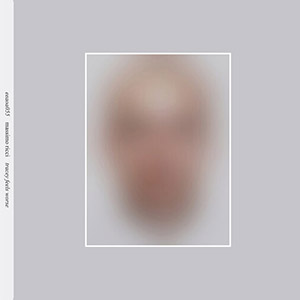 Much like the prolific music criticism on his Touching Extremes website, Massimo Ricci's first ever recordings to be released are a unique combination of ambiguity and pure no-bullshit bluntness. Consisting of material sourced from 1984 and heavily reworked in the four decades that followed, there is a purity in his approach that makes bleak, repetitive structure all the more fascinating.
Much like the prolific music criticism on his Touching Extremes website, Massimo Ricci's first ever recordings to be released are a unique combination of ambiguity and pure no-bullshit bluntness. Consisting of material sourced from 1984 and heavily reworked in the four decades that followed, there is a purity in his approach that makes bleak, repetitive structure all the more fascinating.
Tracey Feels Worse is a single 35 minute piece that structurally remains constant throughout: wave-like swells of indeterminate sound come and go hypnotically, with consistent, though microscopic, changes occurring throughout. Ricci opens with metallic low-end sweeps with slow evolution apparent from the start. He expands the sound with reverberations liberally applied throughout and increasing over time. There an overall bleakness throughout, but never does it come across as overly depressive or plodding. The sound becomes more enveloping, the intensity builds, resulting in an excellent sense of disorientation. The change seems so slow at first but by the end the difference seems dramatic. Not to draw too many comparisons to other artists, but the purity of sound and the approach to repetition is not so far removed from some of David Jackman’s more recent works.
From his style of writing and the sound and presentation of the disc, I do not believe the ambiguity that runs throughout Tracey Feels Worse is necessarily intentional, or at all essential, to the album. It strikes me as being a work of pure sound exploration, without any sort of hidden theme or social commentary or conceptual intent. Given that approach to sound rarely exists outside of the world of harsh noise, it is refreshing to hear it in something more understated and nuanced. Of course I had natural curiosity throughout of what the source recordings were, how they were being processed (since no loops or samples were used), but in the end that knowledge is in no way needed to justify or appreciate the work.
Samples can be found here.
Read More

